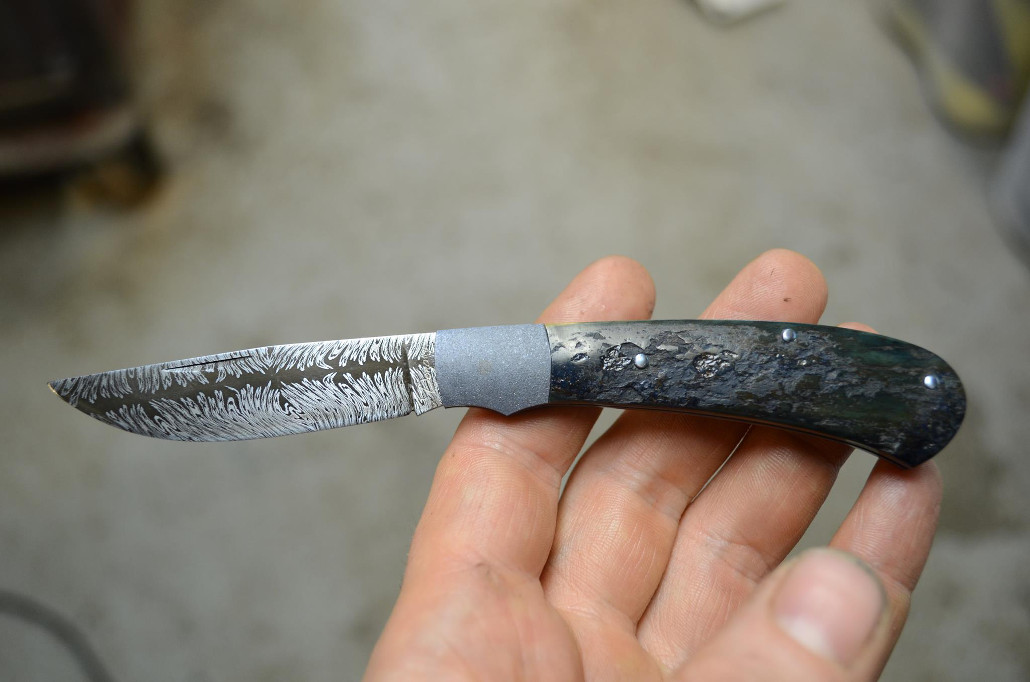Making damascus/san mai/mokume gane (pattern welded steel). Nickel is a pretty incredible element, and in metallic form, it’s sort of a universal one, it’ll bond cohesively to almost any other metal in forge (diffusion) welding.
At 2300-2400F to steel of course, but at lower temps to gold, silver, bronze, brass, tin, etc, and even to titanium under the right environment.
Here’s some of my damascus if you’re interested in seeing it:
That’s nickel/steel damascus I made for Okluma flashlights, the silver metal in the photo is all pure nickel, which is diffusion welded to powdered steel in a cannister, at 2400ish F, then worked under a large power forging hammer and press, to manipulate the pattern in the material, which is revealed when the final part is etched in ferric chloride. Now for knives, you generally want to use all steel (nickel alloy steel supplies the contrast), which compatible heat treat regime, for optimal performance, but for parts that don’t require through hardening, or patterns that allow the nickel to not land on a cutting edge for instance, nickel can’t be beat for corrosion resistance and wow factor, nothing shines as bright when well polished.
When etched in the acid, the nickel of course, resists the acid, while the carbon steel or other metals react differently, which is what “reveals” the pattern, in the case of carbon steel, it turns grey to black depending on alloy and hardness, as it becomes coated with an oxide layer, which not only looks nice, but helps protect the steel from further corrosion, similar to parkerizing, etc.
Knife and steel making have been my passion for over a decade, but for a long time all I did was make damascus for a living. After my dog got cancer a couple of years ago, I had to quit and so now I mostly make it for my own use, but for a while I was going through a couple tons of steel and a thousand lbs or so of nickel a year.
Since this is already majorly OT, here’s a photo of some of my knife work, in case anyone is curious.
This one is from 5 or 6 years ago, but one of my favorites. It’s 1095/15n20 carbon damascus in a pattern I created called “Warbonnet”, it’s a slipjoint folding knife, with titanium anodized fittings, domed pins, etc, and fossil woolly mammoth tusk for the covers (handle). 100% hand made, by me, even down to creating the little pin (rivet) heads with a tiny ball peen hammer from rod. Obviously I didn’t harvest the tusk from the mammoth directly, since they’ve been extinct for over 10,000 years, and I didn’t dig the iron ore, and smelt it (though I have), but you get the picture I think. 




